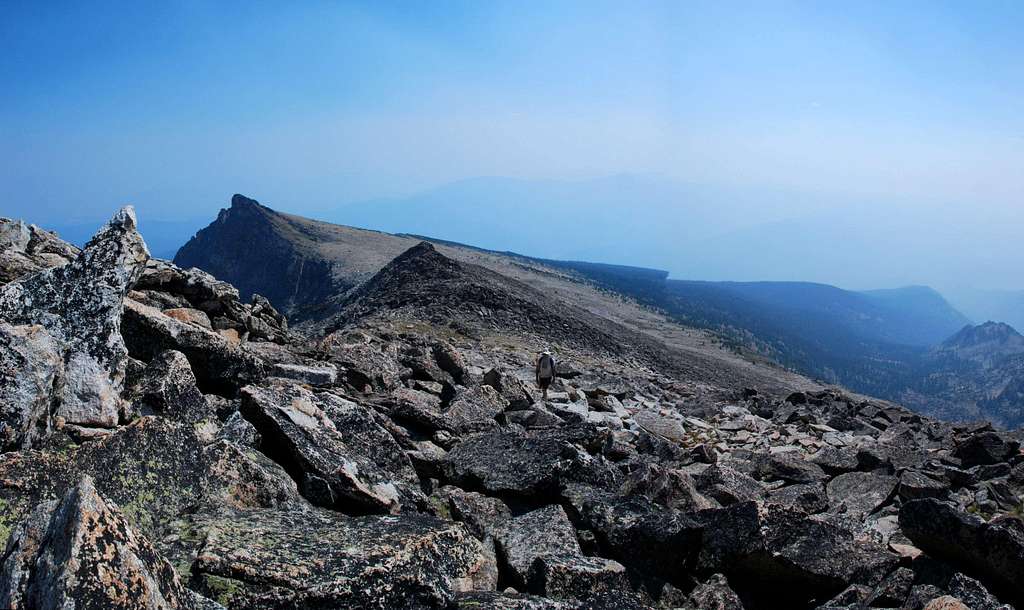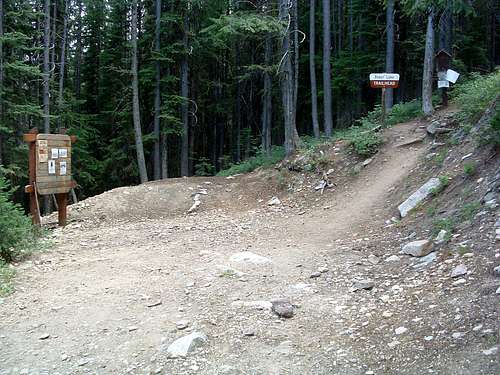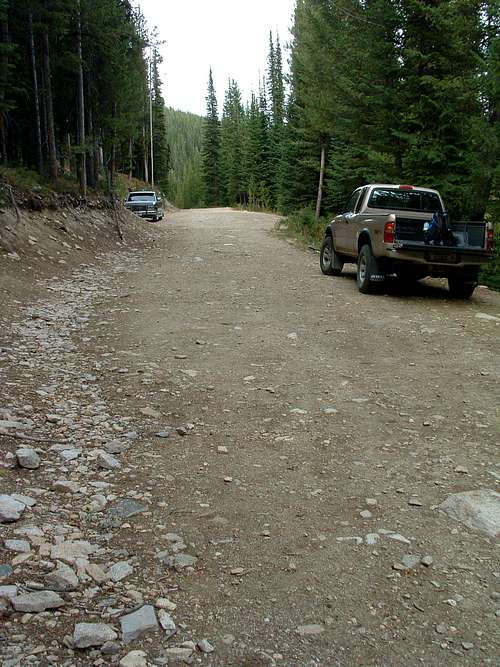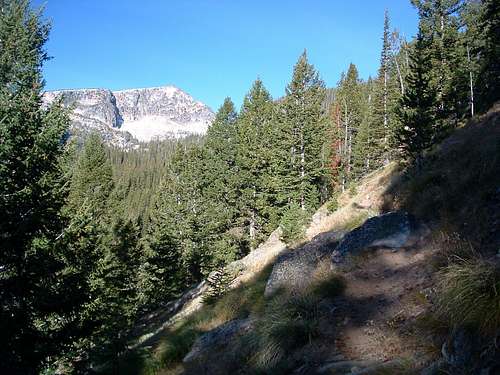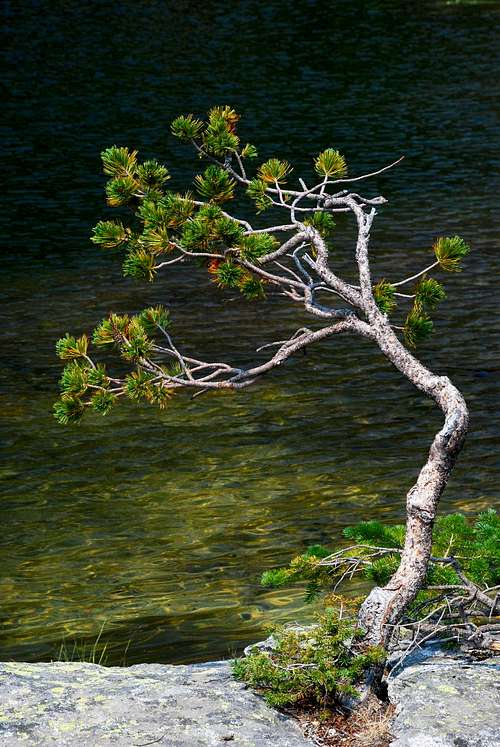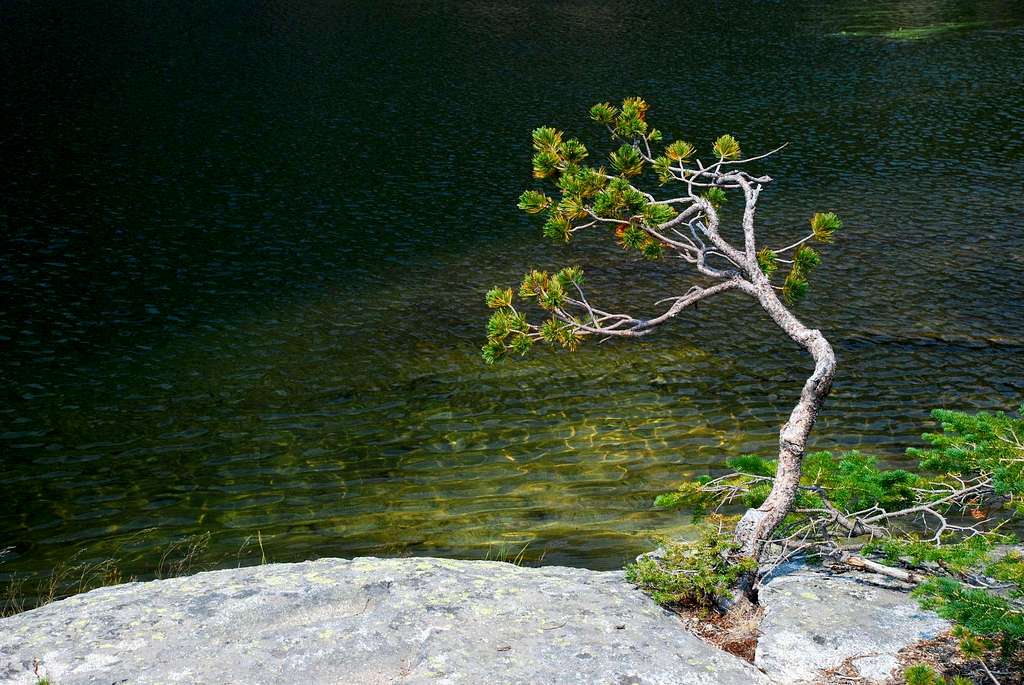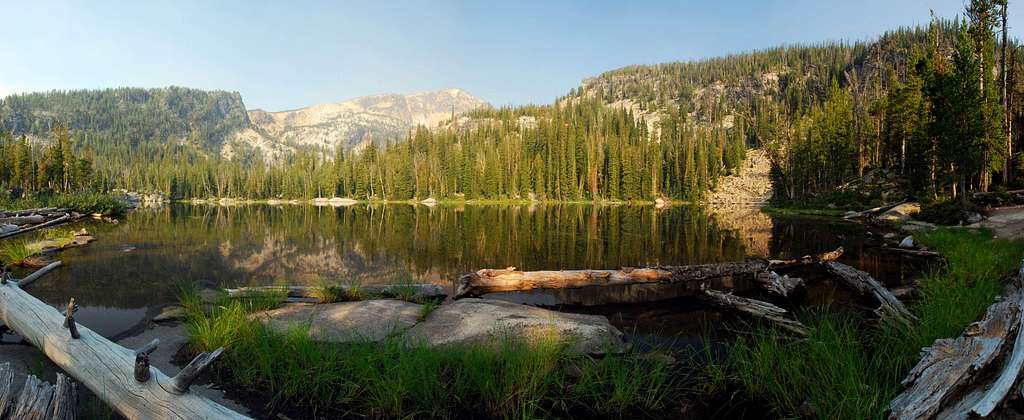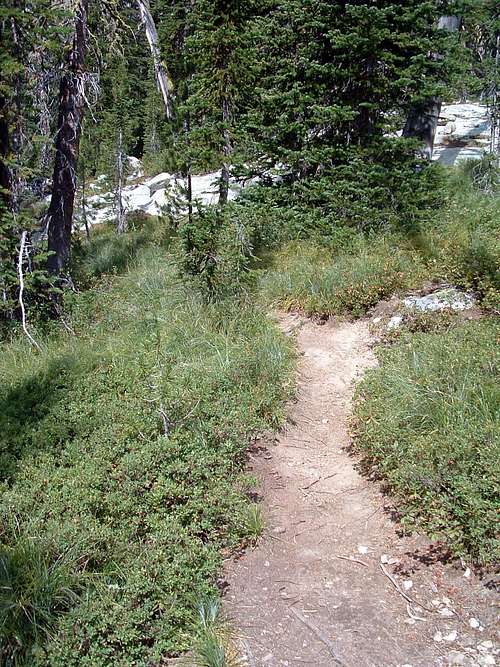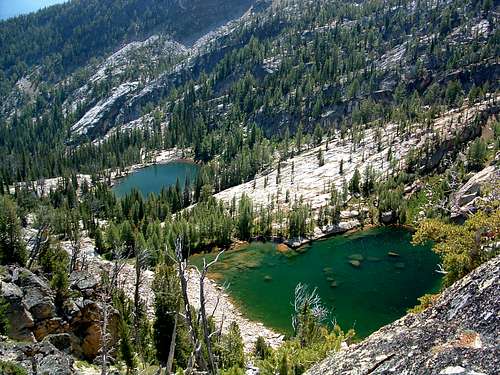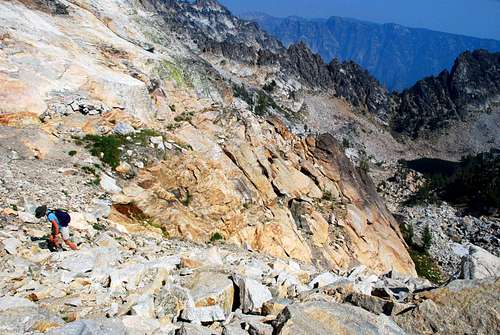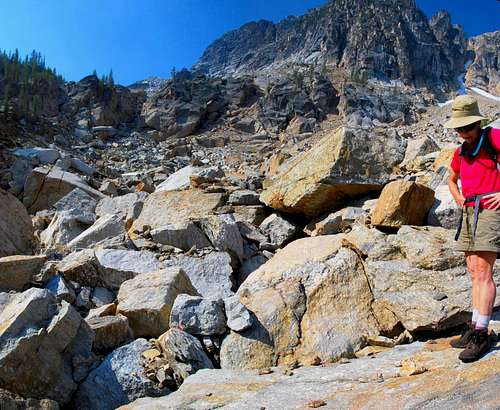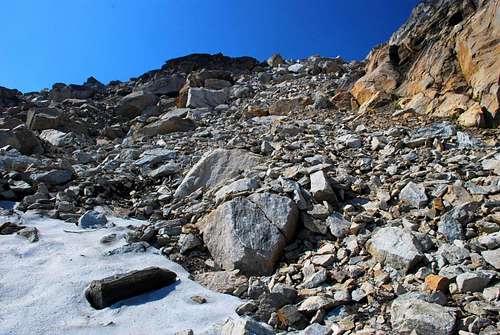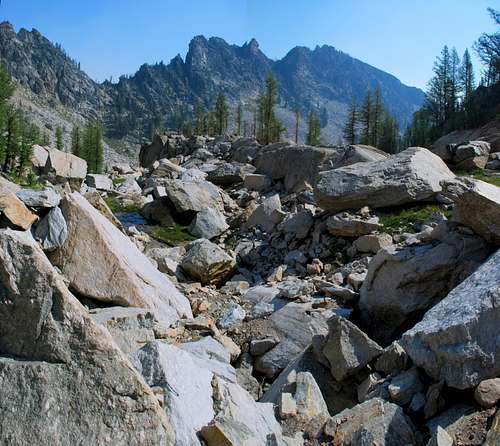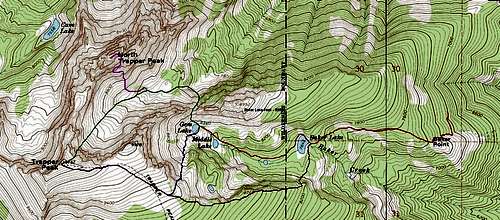-
 22462 Hits
22462 Hits
-
 83.09% Score
83.09% Score
-
 16 Votes
16 Votes
|
|
Route |
|---|---|
|
|
45.88989°N / 114.29685°W |
|
|
Hiking, Mountaineering, Scrambling, Skiing |
|
|
Spring, Summer, Fall, Winter |
|
|
Most of a day |
|
|
Class 3 |
|
|
Moderate |
|
|
I |
|
|
Overview
Route Type - Scramble Class Level – Class 3 Elevation – 10,157’ Gain - 3,270' Distance - 3.8 miles (one way) Length of time required to complete route – a day Because it has the highest elevation of any summit in the Bitterroot Mountains, Trapper Peak is a popular destination. On weekends when the weather is nice, the summit can get crowded, especially in the afternoon. Most people who do so, reach the summit of Trapper Peak using the Standard Route. I don’t particularly care for that route because it seems tedious, monotonous, and boring (at least from late-spring to early fall). I have been working to discover other, more interesting, routes over the last year. Last fall (2006) I found a couple – the Baker Lake Gully which requires plenty of bushwhacking (I rate it 6/10) and the Baker Lake Ridge which is perfect descent route from the summit (I rate it 10/10) and not bad for ascent either (9/10).
Getting ThereBaker Lake Trailhead (elevation 6,817’)Currently there is a detour from Hwy 93 to the West Fork Road. You must go to the Connor turnoff (about 3 miles south of the normal turnoff) and drive through Connor to reach the West Fork Road. This adds about five miles to your trip if you're coming from the north. Shortly after mile marker 6, and then passing the Trapper Creek Job Corps, on your right (west), you will see a USFS sign indicating a turnoff for the Trapper Creek Trailhead. Immediately begin looking for the USFS sign to the Baker Lake Trailhead which you should see on the same side of the road in a very short distance (It’s the next right after the Trapper Creek Trailhead turnoff). Turn right (west) onto Pierce Creek Road (FS 363). At 1.1 miles after leaving the West Fork Road, a road cuts off to your left (southwest). You want to continue straight ahead, just as the sign indicates. Another mile along the road, at 2.1 miles, you turn right onto FS 5634 and the trailhead for Baker Lake. This intersection is signed. Follow it to the end, which is 10.1 miles from your turnoff from the West Fork Road.. There is parking space for several cars, but it’s a tight spot for turning around. The trail begins going immediately uphill at the end of the road. Route DescriptionThe Approach - Baker Lake Trailhead to Gem LakeShortly after leaving Baker Point, the trail begins to level off enough to let your legs recover from the early elevation gain. As the route begins a traverse along the north side of one of Trapper Peak’s long ridges, you get your first glimpse of the top portion of East Trapper Peak. As the trail nears Baker Lake, some nice outcroppings of granite boulders sit uphill and to the right (north) of the trail. Every time I see them I think they would be appealing to those who like bouldering or want to practice climbing techniques on rocks that are comparatively accessible. Just before reaching Baker Lake, the trail splits. The left (and most obvious) fork goes almost directly south as it bypasses the lake, through a boggy area, and connects to the Baker Lake Ridge Route to Trapper Peak. Keep a sharp watch for a couple of cairns marking the right (west) fork up and over some slabs. The right (west) fork is what you want to follow to reach the lake. If you’ve been keeping a good hiking pace, less than 45 minutes after leaving your parked vehicle, you should reach the eastern shore of Baker Lake, about 1.25 miles from the trailhead. Though a trail completely encircles the lake, the best way around is on Baker Lake’s north side (your right). Follow this trail around, to a spot just before reaching the creek flowing from the higher lakes, then turn right (southwest) onto the path leading away from the lake. As you pass Middle Lake, the trail stays on the north side of the inlet creek flowing from Gem Lake. In less than .25 mile you will reach the northeast corner of Gem Lake, a beautiful little tarn 2.25 miles from the trailhead. At an elevation of 8,340’, Gem Lake has several good camping sites which can be used as overnight resting spots before tackling one of the climbers’ routes to the summit of either Trapper or North Trapper. Bring your fishing rod, all 3 lakes hold cutthroat trout! Climbers’ Route – Gem Lake to Trapper Peak Summit From the eastern sore of Gem Lake look left toward the southwest corner of the lake. You should see a large (almost house-sized) boulder. Walk south along the shore, then, hugging the shore as much as possible, contour west and pass between the boulder and the shoreline. Immediately after passing the boulder, turn to the southwest and climb into the base of the gully. Begin scrambling easily up the throat of the gully. In fairly short order, the gully turns almost directly south. Continue climbing. Unless there is snow present, this climb is a pretty easy scramble. I’d rate it Class 2 most of the time with only a few spots requiring the use of your hands to propel you upward (Class 3). Because (at present) this route sees so little use, there is no discernable trail through the gully. Take your time and look for the path of least resistance. A couple of hundred feet from the top of the gully, you’ll become aware of steep light-orange colored slabs on your right. The route you want is close to the base of those slabs. You’re going to be tempted to ease left because you’ll believe you see the edge of Trapper’s ridge close at hand. It’s an illusion, so don’t be fooled. What you see is really the top edge of the east wall to the gully. You gain nothing by climbing onto its top. In fact, you make the climb more difficult. Leave the top of the gully and begin hiking southwest through a smattering of wind-stunted trees. You will reach the “standard” trail within a hundred yards or so. It is well-traveled and quite distinct. You can’t miss it. From this point upward you will be following this track. Keep in mind, a lot of people have used the “standard” track, many of them not skilled at route finding. The trail is braided in many places. In fact, there are several “cairned” trails leading toward the summit. Since this is a wide-open area, you’re hardly likely to get too far off track, so it really doesn’t matter which cairns or trail you follow. As you near the summit, there are several talus piles which at first appear to be the summit. Too bad, but they’re not! To keep your wanderings to a minimum, do the following. When you get close to the first of the talus piles, begin looking for, what I call “a signpost rock” part way up the left (south) side of one of the talus piles. (Stay on an existing track as you look for it. It’s visible from a long distance away.) Then, if you ignore the trails and cairns “on the ground” and head directly for this signpost rock, your line will be almost directly toward the summit and a bit shorter than if you try to follow existing trails and cairns. Once you’ve reached the signpost rock, you can easily see the summit. Pick your own line as you move forward, up the last pile of talus, and onto the summit. When to GoThis route is doable any time of year.Essential GearNo “special” gear is required for this climb unless you attempt it when there is snow in the gully. On snow you will need an ice axe and crampons. The gully is not especially steep, so it’s not likely a rope will be needed; however it is steep enough that avalanche conditions could be present under certain conditions. Stay alert!Route Statistics |


